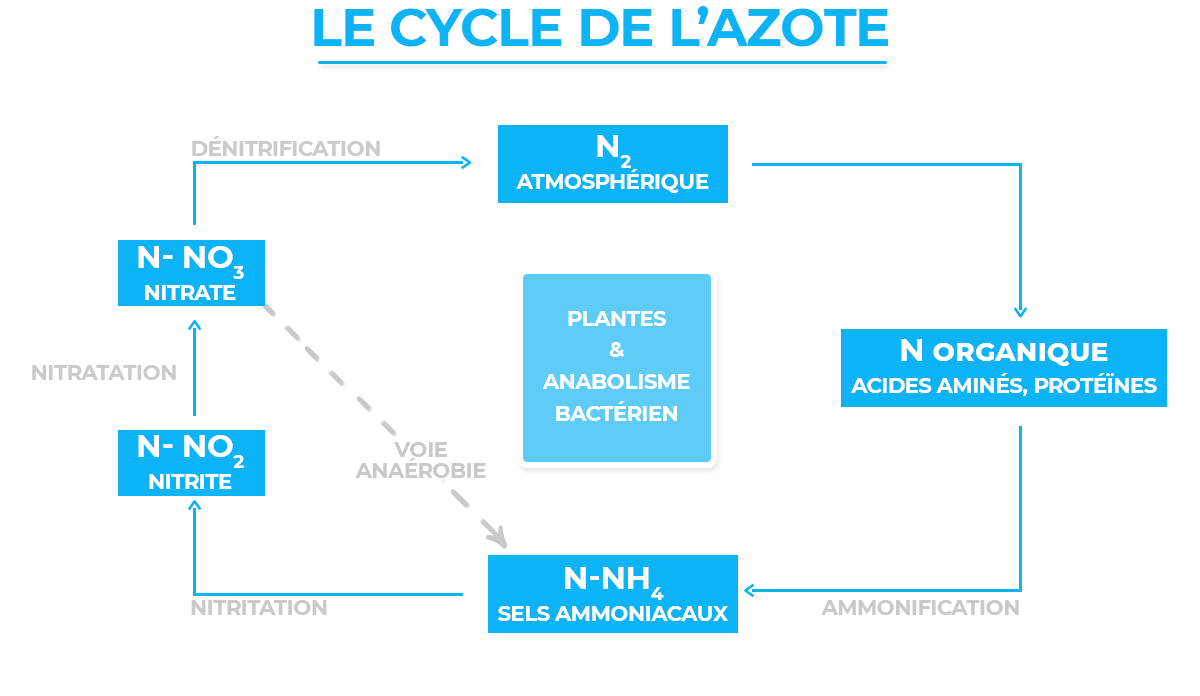Retrouvez ici les indispensables et meilleures ventes pour nos propriétaires de bassin.
Retrouvez ici les indispensables et meilleures ventes pour nos propriétaires de bassin.

Wondering when is the best time to put bacteria in your pond? As you know, it is strongly advised to do so with a view to restoring its ecosystem.
These bacteria help to promote the smooth running of the nitrogen cycle. In a natural pond, they are not mandatory. However, in case of imbalance, the addition of bacteria is one of the first solutions used. In any case, it is strongly recommended to aerate your body of water. This will notably accelerate the development of bacteria in a pond.

Indeed, the latter make it possible to eliminate organic matter, as well as nutrients known for their particularly harmful characteristics for the living organisms of the animal biotope. That said, a crucial question arises: when should bacteria be put in a pond? We will try to provide the answer in this article, while addressing the various parameters to consider before such an operation.
⭐ You may also be interested: how long before putting fish in a new pond .
Bacteria play an obvious role in the balance of the pond: they promote the breakdown of organic matter and nutrients that have accumulated in your pond.
On analysis, the use of these bacteria is essential to maintain the balance of your pool and has many advantages. Putting bacteria in your pond helps its filtration system. In addition, it also promotes the reduction of thread algae.
Finally, the approach makes it possible to reduce the organic pollution of the basin, as much as it promotes the regulation of the nitrogen cycle. Thanks to this technique, you will put an end to the dreaded rise of nitrites, which makes the water in your pond biologically unhealthy and unsuitable for the good health of the fish that live there.
⭐ You may also be interested: we show you how to analyze the water in your pond .
It is necessary to put bacteria in your pool as soon as its temperature rises above 8°C. If not useless, it is rather inefficient to put bacteria in your pond if the temperature is below 8°C.
Read the instructions for use to find out the amount of bacteria that will be effective for depolluting your pool. Generally, this quantity of bacteria to be used varies according to the quantity of fish and the volume of water available in the pond.
Putting the bacteria in a new basin has a triple action:
These conditions are essential for the survival of fish. This is why it is recommended to put the bacteria in the pond before introducing them.
⭐ You may also be interested: we explain how to measure water hardness
This is the restarting of the pool after a shutdown. This is usually the case after winter. Once again, it is essential to take into account the temperature of the pool: this must vary between 8 and 10°C.
Certain specific bacteria are recommended for restarting pool maintenance devices. These so-called heterotrophic bacteria have immediate and lasting effectiveness. Furthermore, it is useful to note that sometimes the bacteria can be put in a pool for maintenance.
And for good reason, some pools have an environment whose maintenance requires putting bacteria on a set frequency: either every 15 days, or every month, or every quarter. The pool temperature will be useful in determining whether or not to take action.
Aquipond Greenstab - Natural treatment against pond algae It is a natural product that helps limit algae at any time. It also has a prevent...
View full detailsReduces the layer of silt in the pond by at least 40% Easy to use with less impact on biodiversity Prevents fermentation, bad odors. pH ...
View full detailsOrganic dye to block plant growth by limiting photosynthesis ORGANIC PRODUCT NON TOXIC TO HUMANS (DIVING) AND FISH. 100% NATURAL AND BIODE...
View full detailsThe positive effects of barley straw have been known to water enthusiasts for a long time. But currently barley straw is difficult to find and i...
View full detailsReduces at least 40% of the layer of silt in the pond Easy to use with less impact on biodiversity Prevents fermentation, bad odors. ...
View full details
Comments
Leave a comment